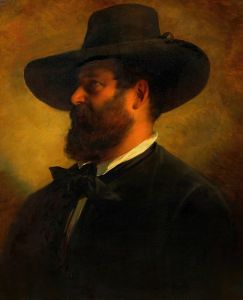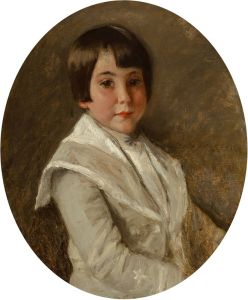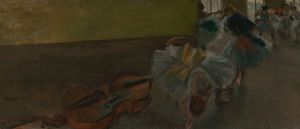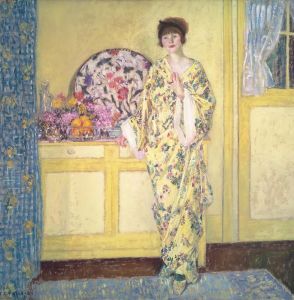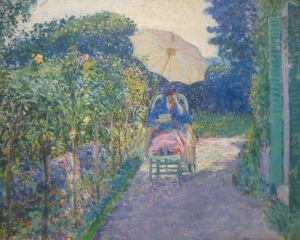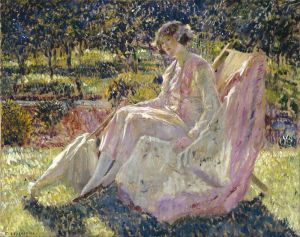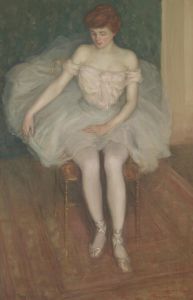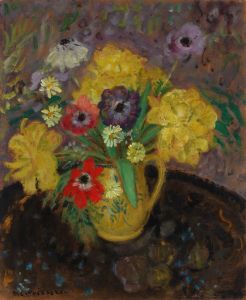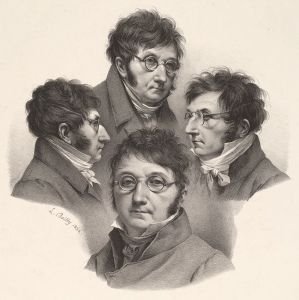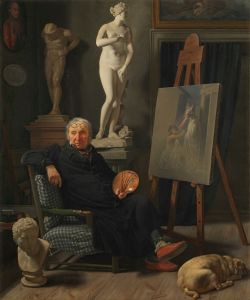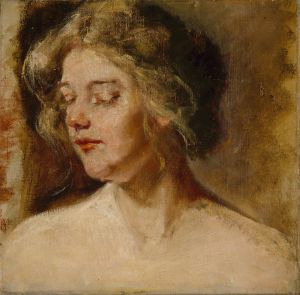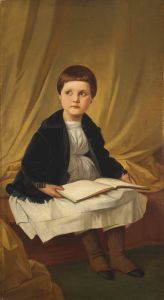
Self-portrait
A hand-painted replica of Frederick Carl Frieseke’s masterpiece Self-portrait, meticulously crafted by professional artists to capture the true essence of the original. Each piece is created with museum-quality canvas and rare mineral pigments, carefully painted by experienced artists with delicate brushstrokes and rich, layered colors to perfectly recreate the texture of the original artwork. Unlike machine-printed reproductions, this hand-painted version brings the painting to life, infused with the artist’s emotions and skill in every stroke. Whether for personal collection or home decoration, it instantly elevates the artistic atmosphere of any space.
Frederick Carl Frieseke (1874-1939) was an American Impressionist painter known for his depictions of women in intimate settings and outdoor scenes bathed in sunlight. His self-portrait, titled "Self-portrait by Frederick Carl Frieseke," is a significant work that offers insight into the artist's self-perception and style.
Frieseke was born in Owosso, Michigan, and studied at the Art Institute of Chicago and the Art Students League of New York. He later moved to Paris, where he continued his studies at the Académie Julian and became influenced by the French Impressionists. Frieseke eventually settled in Giverny, a village that was home to Claude Monet and other artists, where he developed his distinctive style characterized by vibrant light and color.
The "Self-portrait by Frederick Carl Frieseke" is believed to have been painted around 1901-1902, during a period when Frieseke was establishing himself as a serious artist. The portrait shows Frieseke in a contemplative pose, looking directly at the viewer with a calm and confident expression. He is dressed in a dark suit, which contrasts with the lighter background, drawing attention to his face and upper body. The brushwork is loose yet controlled, reflecting the influence of Impressionism while also showcasing Frieseke's unique approach to capturing light and texture.
This self-portrait is notable for its introspective quality, offering a glimpse into Frieseke's personality and artistic identity. Unlike many of his later works that focus on female subjects and domestic scenes, this painting is more personal and direct. It serves as a testament to Frieseke's skill in portraiture and his ability to convey character and mood through his use of color and composition.
Frieseke's work, including this self-portrait, played a significant role in the American Impressionist movement. His paintings were exhibited widely in both Europe and the United States, earning him recognition and acclaim. He received numerous awards throughout his career, including a gold medal at the Panama-Pacific International Exposition in San Francisco in 1915.
Today, Frieseke's self-portrait is held in various collections and continues to be studied and admired for its artistic merit and historical significance. It provides valuable insight into the early 20th-century art scene and the cross-cultural influences that shaped Frieseke's work. As an artist who bridged American and French Impressionism, Frieseke's self-portrait remains an important piece in understanding the broader context of his oeuvre and the development of Impressionist art.





